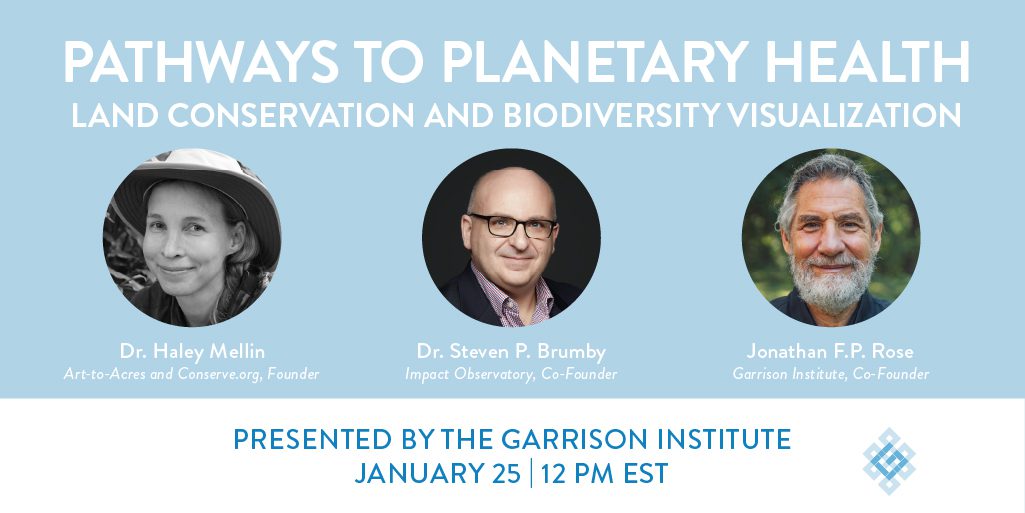Assisting Our Planet through Observation
by Aidan Kennelley
On paper, Dr. Haley Mellin and Dr. Steven Brumby may look like very different people; Mellin is a San Francisco–based painter while Dr. Brumby has a PhD in theoretical physics. As we learned in a conversation hosted by the Garrison Institute on January 25, however, they have found a vital common ground for their work: land conservation.
A visual artist from her upbringing into her adult life, Mellin founded Art to Acres, a nonprofit assisting artists and art institutions who want to support land conservation projects. Her inspiration for this nonprofit emerged from the inextricable link betweent art and conservation “As artists, the notion of legacy and what will be left is something that always sits with us,” Mellin stated. In her mind, conservation and art are both about identifying and preserving something.
Dr. Brumby comes from a rigorous scientific background. After working as a physicist in Australia, Brumby came to the United States 20 years ago to work on the U.S. space program. In that time, Brumby learned that it is relatively easy to put a satellite camera into space and to observe the planet — but it’s a lot harder to actually do something with that data. So he shifted his research to explore how computers might make maps from satellite images, using that data to track how the planet is changing.
With this research focus in mind, Brumby started working as a geographic visualization director at the National Geographic Society. He also founded Impact Observatory, an organization whose mission is to “empower decision makers with the AI technology tools they need to succeed, including algorithms, data, and software.” In other words, Brumby’s goal is to give anyone and everyone the resources they need to conserve and tend to the lands in their communities.
Brumby met Mellin through this work, and they have since collaborated on several projects. A tool like the Land Use & Land Cover resource from Impact Observatory serves an important function for Art to Acres. For Mellin, the value of this technology can’t be understated: the up-to-date images it shows of the earth allows her nonprofit to adapt strategies in real time, while also providing feedback for conservation patrons, showing them the good work their donations do. Such scientific tools can and do serve a critical function for conservation nonprofits and NGOs around the globe.
While Brumby and Mellin have proved the value of these technologies, they believe that many (if not most) governments don’t know how to observe and properly manage lands. They hope the increasing availability of scientific technology of the sort marketed by Impact Observatory can empower smaller communities (from Indigenous peoples all the way to urban gardeners) to take control of conservation in their own communities and to manage lands more sustainably.
